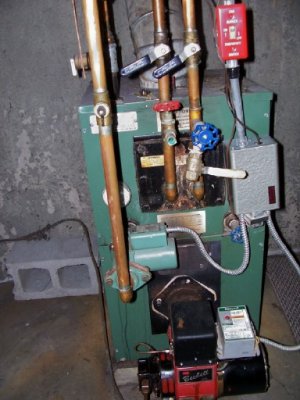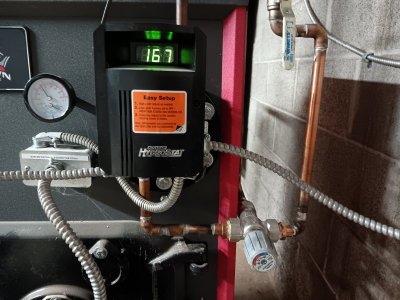A mixing valve is a good idea. The picture below shows what it will look like. If you notice, there are two lines coming to the valve (One is hot water, and the other cold). The valve has a dial on it, which allows you to regulate the mixture of the both, before it continues to you faucets. If he installs one, he will show you which way to adjust for hot or cooler temp.
View attachment 418275
Next, you will notice the control box which regulates the boiler temp low and high cutoffs. When it reaches the low, the boiler kicks on, and when it reaches the high, it kicks off. It's OK for this reading to even be up to 180 because that's not the temp of the water coming to your faucets, which is regulated by the mixing valve. However, if you don't have a mixing valve, then the only way to control the temp would be to set the high limit on the control box to a lower setting (Which the tech would need to do).
View attachment 418277
Lastly, the only way to know the temp of the water leaving the boiler and headed to your faucets is they can clamp a temp gauge reader briefly onto the exit pipe to get an accurate reading. I suppose you could tape a stove thermometer or something to it, but it's really not all that necessary. You will know when you turn your hot water faucet on and let it run for a bit, if it's just too hot for your liking.
For safety, most boilers have a T&P valve (Temperature and Pressure) as you can see in the picture below. If your temp gets too high, the valve will begin to leak water out the discharge pipe to relieve the pressure. The tank in the picture works like a well pump bladder tank which helps to keep your boiler from kicking on and off as much.
View attachment 418279






